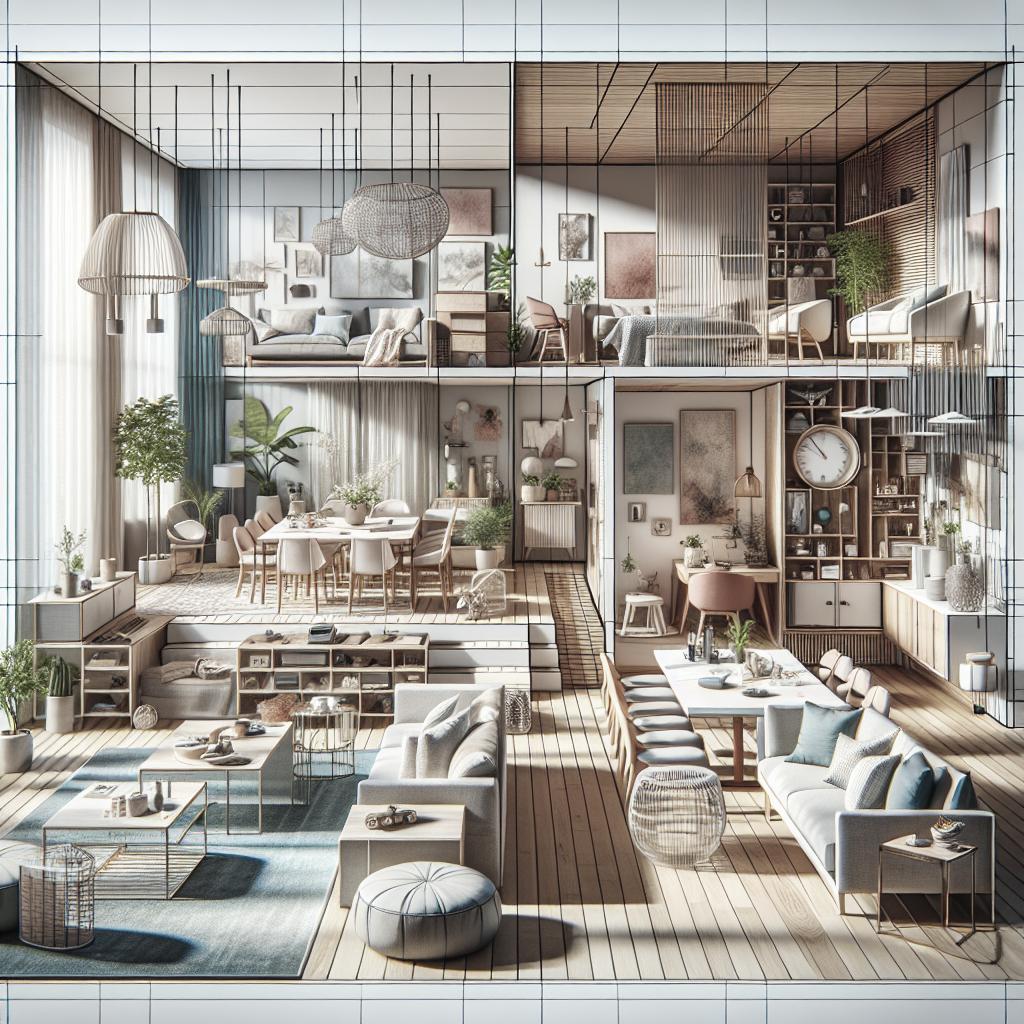“`html
Sign up to the Homes & Gardens newsletter
Open-plan living has become increasingly popular, with modern homes embracing the flexibility and social benefits it offers. However, creating a cohesive and balanced open-plan layout can be challenging. This blog post will explore essential tips to ensure your open-plan space is functional, stylish, and harmonious. By breaking up sight lines, avoiding an overly open feel, paying attention to natural pathways, and using rugs for zoning, you can achieve a layout that enhances the aesthetics and utility of your home. We will also address common questions about open-plan layouts to assist you in making informed decisions. Dive into the world of effective space design with our insightful guide.
1. Breaking up sight lines
Open-plan spaces can sometimes feel too vast and overwhelming if sight lines aren’t effectively managed. One way to break up sight lines is by incorporating different elements at varied heights. This could include tall bookshelves, strategically placed artwork, or suspended lighting fixtures. Such elements not only add dimension to the room but also guide the gaze naturally, making the space feel more interesting and less daunting.
Another method is to use partial walls or dividers that still allow light to filter through while creating distinct zones. These can be built out of materials like glass or open shelving, allowing for separation without compromising the spacious feel. This approach helps to maintain an open atmosphere while giving each area a defined purpose.
2. Being too open with the layout
While openness is a key feature of open-plan living, too much openness can result in a lack of privacy and confusion in spatial function. It’s important to balance openness with practical considerations. Incorporating different textures and colors can help delineate spaces without the need for physical barriers.
Furniture placement plays a crucial role in enhancing openness while maintaining intimacy in certain areas. Arrange seating areas to encourage conversation while allowing for fluid movement between zones. This ensures that while the layout remains expansive, it is also inviting and functional, allowing for various activities to coexist harmoniously.
3. Not paying attention to natural pathways
The beauty of an open-plan space is its ability to promote flow and connectivity. However, ignoring natural pathways can disrupt this harmony. It’s essential to observe how individuals naturally move through your space and design accordingly. Clear, unobstructed paths should be maintained between key areas, such as from the kitchen to the dining area or from the living room to an outdoor space.
Consider using visual cues such as flooring patterns or furniture placement to subtly guide movement throughout the space. These cues help inhabitants intuitively navigate the environment, improving both the functionality and safety of the open-plan setting.
4. Not using rugs to zone instead of furniture
Rugs can be a powerful tool in an open-plan layout, offering a way to define spaces without the need for excessive furniture. Selecting the right rug size and pattern can help anchor areas like living rooms or dining zones, creating a distinct visual boundary that enhances comfort and style.
This allows for a more flexible furniture arrangement while maintaining the integrity of each zone. Consider layering rugs for added texture and interest, which can further delineate spaces and enhance the overall aesthetic. Rugs are not just practical; they can also be a statement piece that ties a room’s decor together.
FAQs
What is the best layout for an open plan space?
The best layout for an open-plan space depends on the specific needs and lifestyle of the occupants. Generally, a successful layout balances openness with clearly defined zones that cater to different activities, such as cooking, dining, and relaxing. Using a combination of furniture arrangement, decorative elements, and thoughtful placement of objects can achieve this balance.
Strategic use of lighting, color, and texture can further enhance this effect, ensuring that each area is cohesive yet distinct. The layout should encourage natural flow and interaction while allowing flexibility for changes and adaptability over time.
Does furniture have to match in an open plan layout?
Matching furniture is not a requirement in an open-plan layout. In fact, eclectic combinations can add character and depth to the space. However, maintaining a consistent theme or color palette can provide a sense of unity and harmony.
Focus on complementary tones and materials that contribute to the overall aesthetic. Mixing styles—such as modern with vintage—can create an interesting juxtaposition, but it’s crucial to balance these elements to avoid a cluttered look. Consider the functionality and flow when selecting and placing pieces.
Next steps
| Aspect | Key Considerations |
|---|---|
| Breaking up sight lines | Use varied heights, partial walls, or dividers to create interest and defined zones. |
| Openness in layout | Balance openness with privacy and functionality using textures and furniture placement. |
| Natural pathways | Maintain clear paths and use visual cues to guide movement for flow and connectivity. |
| Rugs for zoning | Utilize rugs to define spaces, create visual boundaries, and enhance decor. |
“` This HTML document includes the blog post content, styled for readability and ease of navigation. The use of headings, paragraphs, and tables allows for structured presentation of information.
